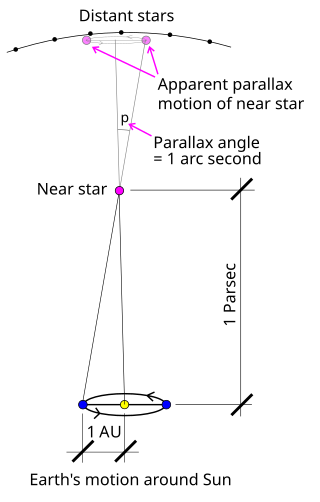Loading AI tools
Cancelled NASA space probe to travel 1000 AU from the Sun From Wikipedia, the free encyclopedia
TAU (Thousand Astronomical Units) was a proposed uncrewed interstellar probe that would go to a distance of one thousand astronomical units (1000 AU) from the Earth and Sun by the NASA Jet Propulsion Laboratory in 1987 using tested technology. One scientific purpose would be to measure the distance to other stars via stellar parallax. Studies continued into 1990, working with a launch in the 2005–2010 timeframe.


TAU was a proposed nuclear electric rocket spacecraft that used a 1 MW fission reactor and an ion drive (with a burn time of about 10 years) to reach a distance of 1000 AU in 50 years.[1] The primary goal of the mission was to improve parallax measurements of the distances to stars inside and outside the Milky Way, with secondary goals being the study of the heliopause, measurements of conditions in the interstellar medium, and (via communications with Earth) tests of general relativity.[2]
One of the tasks envisioned for TAU would be a flyby of Pluto.[3] A Pluto flyby was achieved in 2015 by the New Frontiers program mission New Horizons.
Some of the instruments proposed for the design included a 1.5-meter telescope for observations and a 1-meter telescope for laser communication with Earth.[4]
After launch it would accelerate to about 106 km/s (about 22.4 AU/year, or ~0.04% the speed of light) over 10 years, using xenon as propellant and a nuclear fission reactor for power.[4]
The 25,000 kg (gross launch mass including 10,000 kg of xenon propellant) TAU spacecraft would have been launched into a low Earth orbit by the Space Shuttle in 2005–2010. Once deployed, a central boom would have telescoped the three main units listed above to a total 40 meter length to separate the payload from the nuclear reactor. The ion propulsion/xenon propellant module would have been positioned close to the center of gravity, its 250 km/s[6] exhaust velocity ion engines providing an acceleration of 0.35 mm/s2. TAU would have attained Earth escape velocity in 250 days in a spiralling orbit, followed by Solar System escape speed 700 days later.
The TAU payload module would have separated from the rest of the spacecraft after ten years of constant thruster firing at a distance of 12 billion km (80 AU)[7] as the xenon propellant tanks would have been depleted. TAU would have reached 200 AU in 15 years after launch, 400 AU in 23 years, 600 AU in 32 years, 800 AU in 41 years and the full 1000 AU in half a century. Even so, it would have traversed less than 0.4% of the 4.3 light years to Alpha Centauri, the nearest star.
Seamless Wikipedia browsing. On steroids.
Every time you click a link to Wikipedia, Wiktionary or Wikiquote in your browser's search results, it will show the modern Wikiwand interface.
Wikiwand extension is a five stars, simple, with minimum permission required to keep your browsing private, safe and transparent.